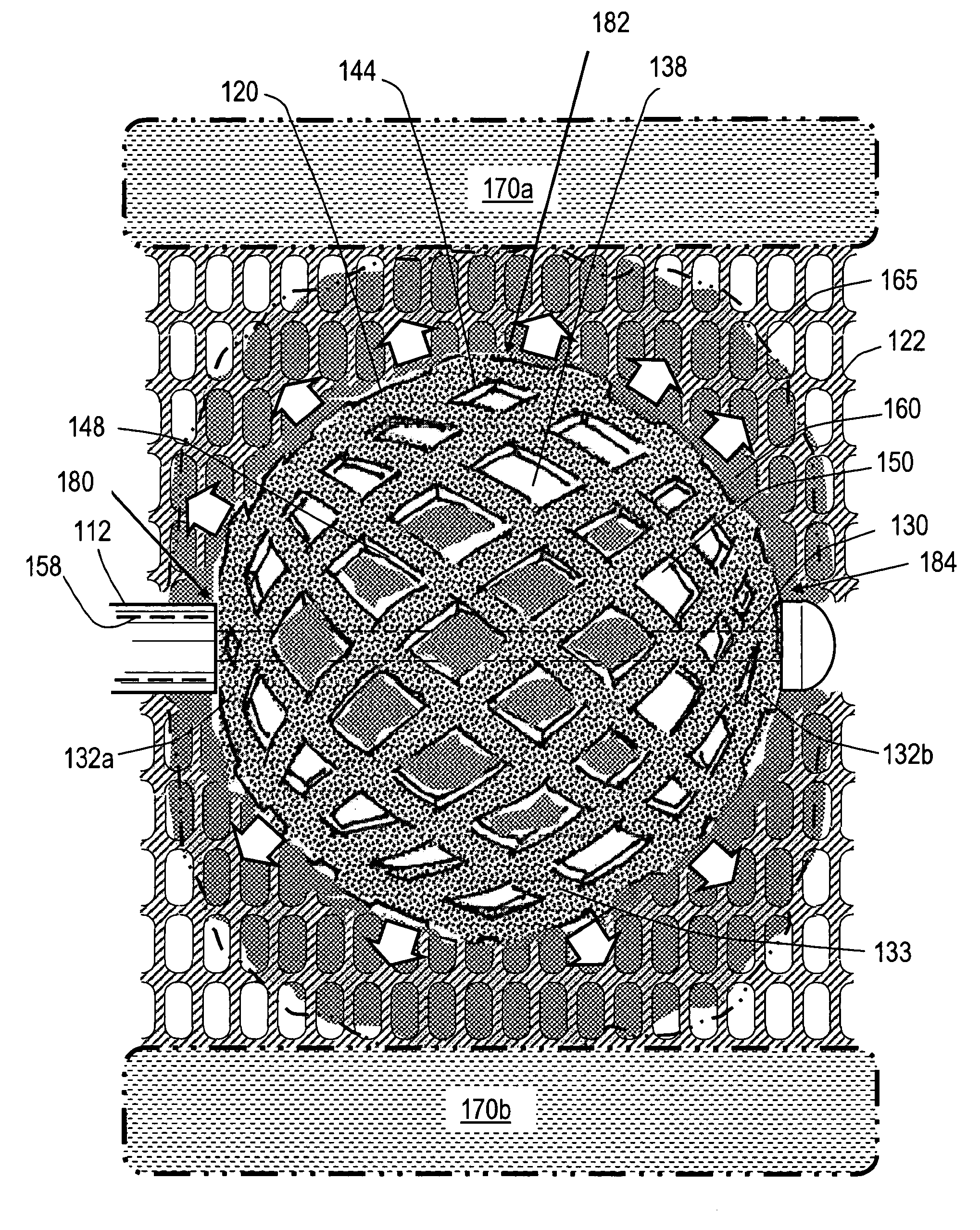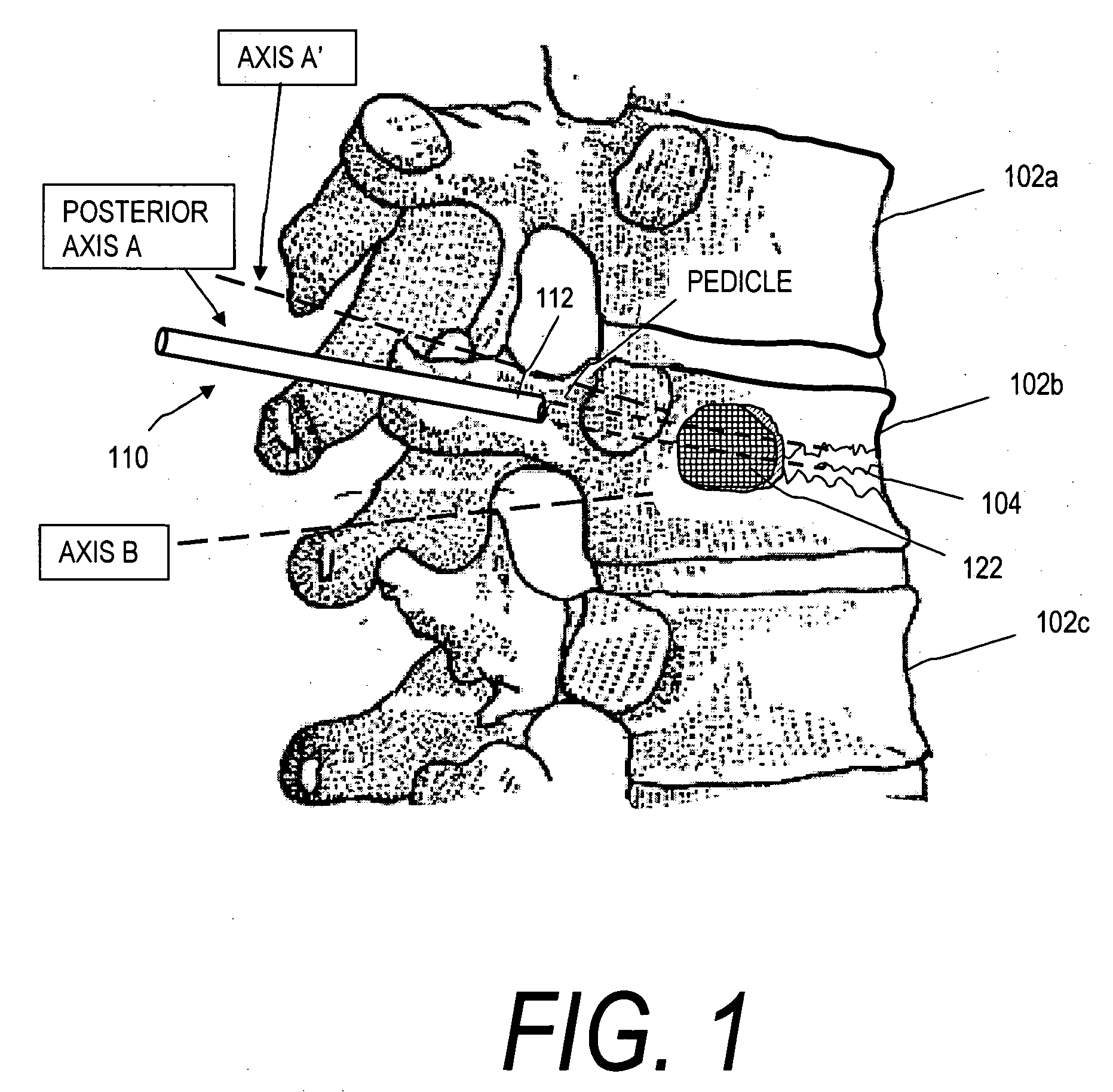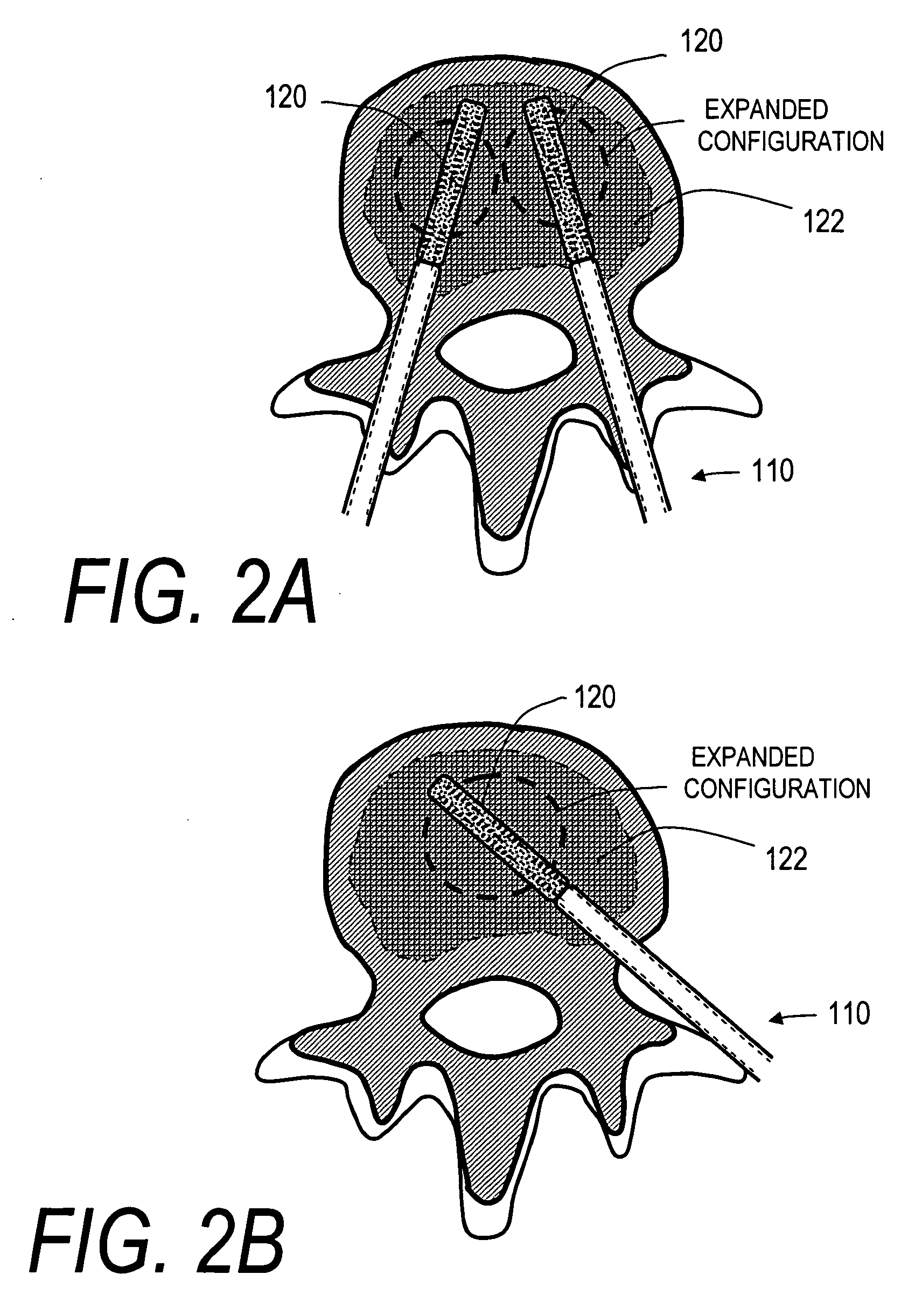Stent systems and methods for spine treatment
a stent and spine technology, applied in the field of spine treatment, can solve the problems of fractures in the spine and hips, affecting mobility and quality of life, and the medical advances aimed at slowing or arresting bone loss from aging have not provided solutions to this problem, so as to prevent subsidence
- Summary
- Abstract
- Description
- Claims
- Application Information
AI Technical Summary
Benefits of technology
Problems solved by technology
Method used
Image
Examples
Embodiment Construction
[0092]FIG. 1 illustrates a vertebral body 102b with a wedge vertebral compression fracture (VCF) 104. The stent deployment systems and methods disclosed herein are directed in some embodiments to safely introducing bone cement into cancellous bone to eliminate pain and to increase vertebral body height. Vertebral body 102a is susceptible to a VCF following treatment of the fractured vertebra 102b since biomechanical loading will be altered. More particularly, the stent deployment systems and methods disclosed herein include systems for treating an acute or older VCF and for preventing a future VCF in a spine segment. In particular, the systems are adapted for restoration of vertebral body height to thereby restore biomechanics of the affected spine segment.
[0093]FIGS. 1, 2A and 2B illustrate one embodiment of a stent deployment system 100 comprising a probe or introducer 110 having an elongated shaft 112 that carries an expandable stent 120 (not shown in FIG. 1) at a distal end of ...
PUM
 Login to View More
Login to View More Abstract
Description
Claims
Application Information
 Login to View More
Login to View More - R&D
- Intellectual Property
- Life Sciences
- Materials
- Tech Scout
- Unparalleled Data Quality
- Higher Quality Content
- 60% Fewer Hallucinations
Browse by: Latest US Patents, China's latest patents, Technical Efficacy Thesaurus, Application Domain, Technology Topic, Popular Technical Reports.
© 2025 PatSnap. All rights reserved.Legal|Privacy policy|Modern Slavery Act Transparency Statement|Sitemap|About US| Contact US: help@patsnap.com



